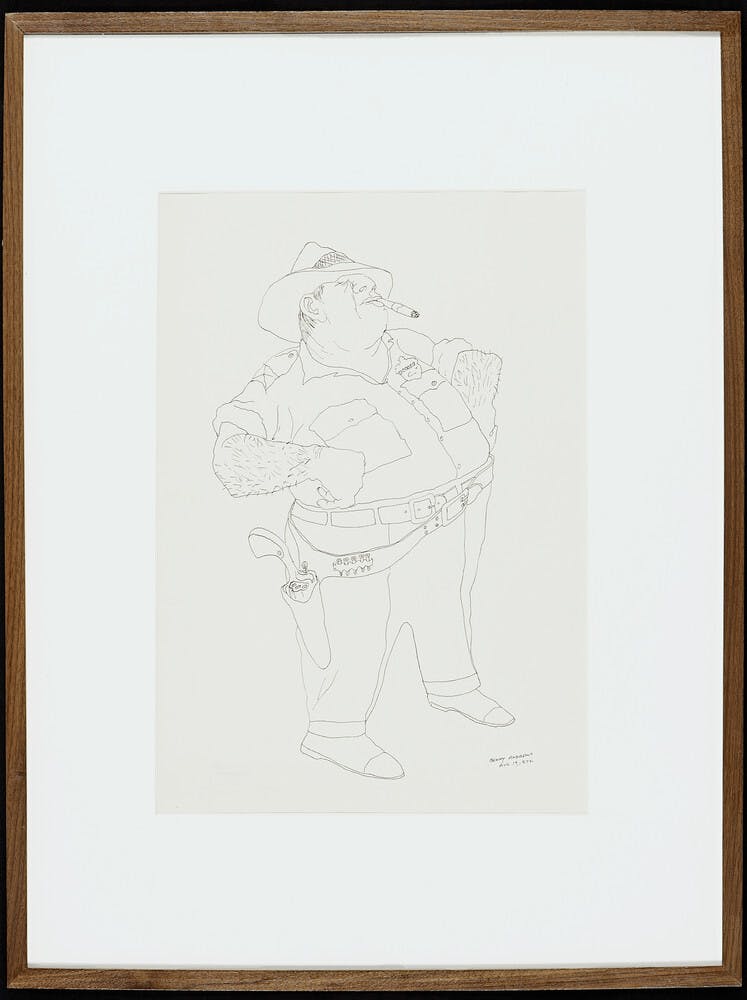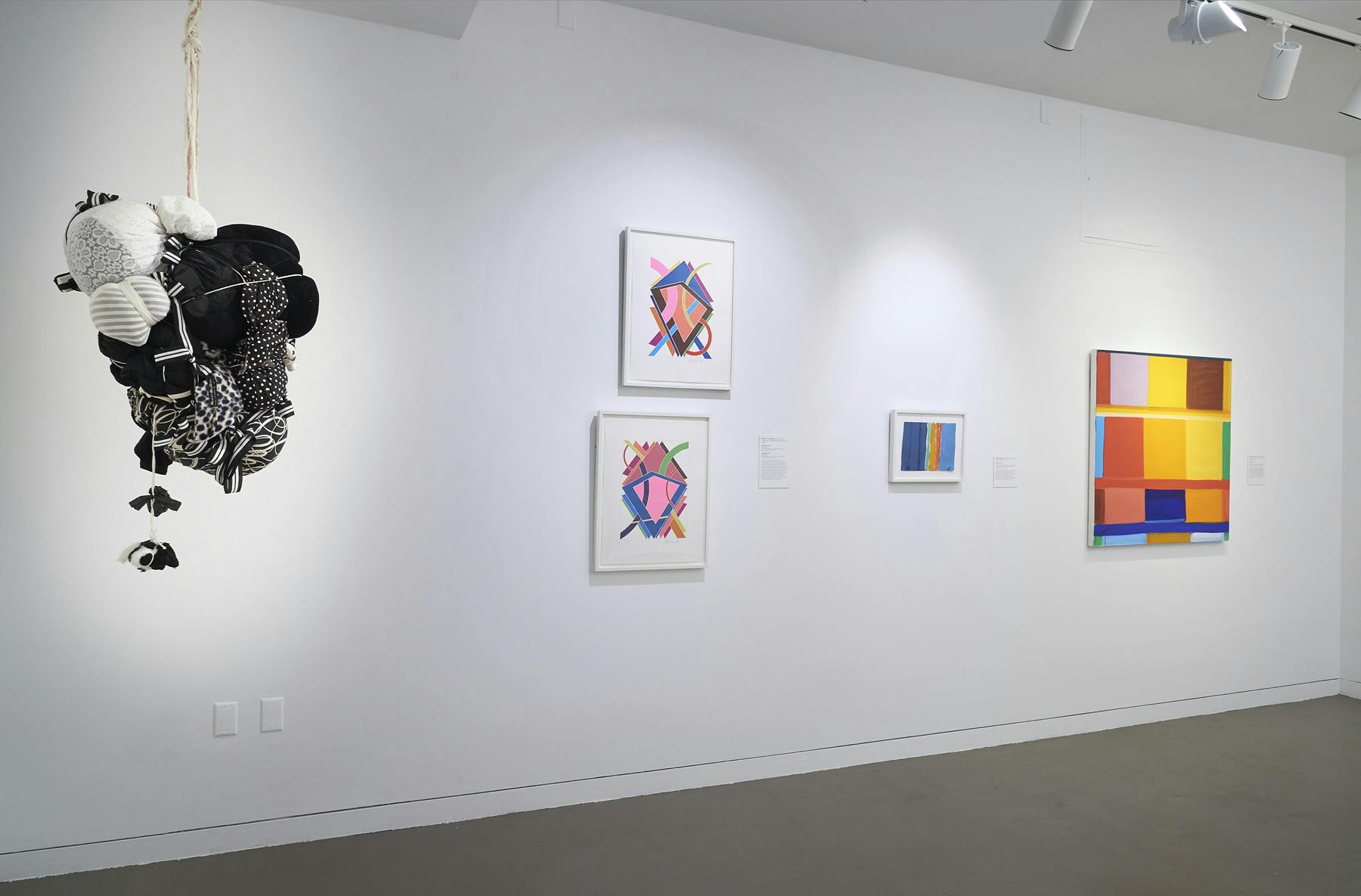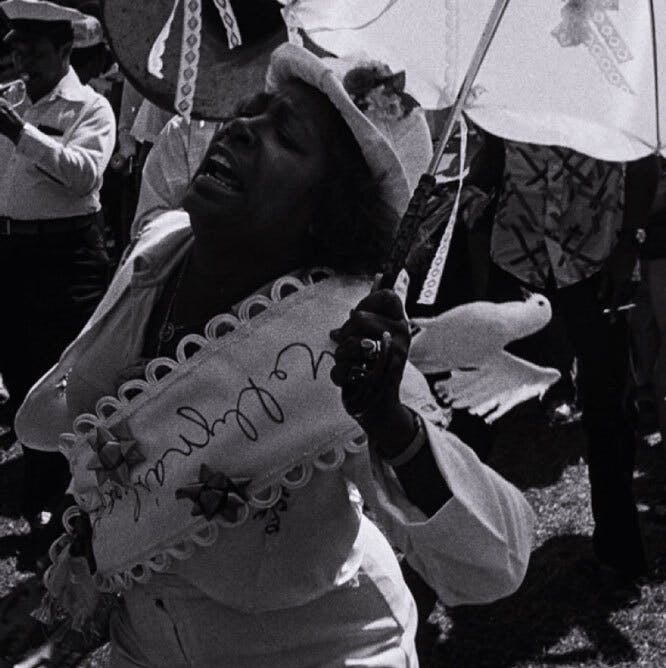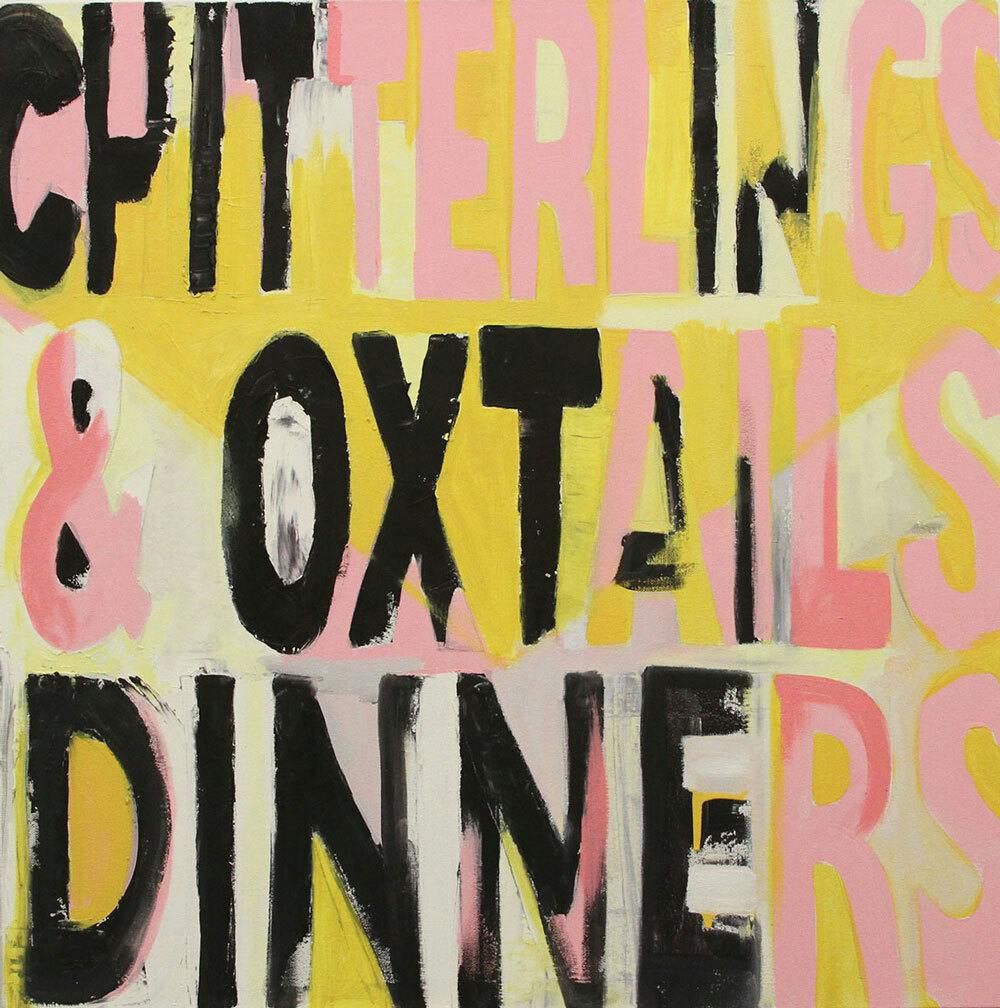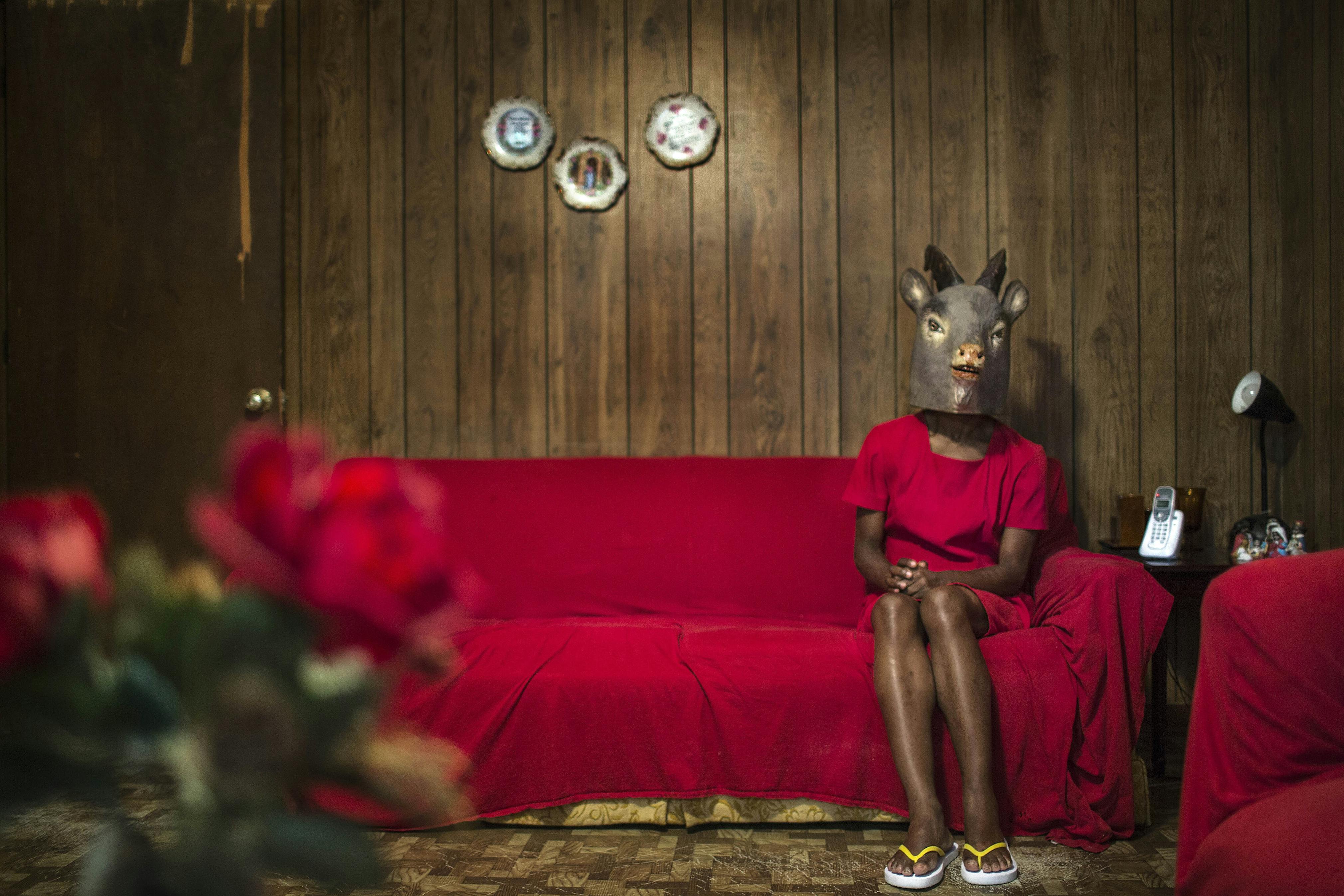Benny Andrews
(1930–2006)A lifelong artist, activist, and educator, Benny Andrews was a champion for the greater visibility of artists of color.
Biography
The first in his family to graduate from high school, Andrews received a BFA from the School of the Art Institute of Chicago (SAIC) in 1958. In his final year at SAIC, Andrews began incorporating collage into his paintings. He recognized that the materiality and real-life associations of fabric could encourage different kinds of responses to the themes and content within his works.
Andrews moved to New York City in 1958, and quickly became immersed in its diverse community of artists. He began teaching in 1966, and two years later, started a thirty-year tenure at Queens College. In 1969, he cofounded the Black Emergency Cultural Coalition (BECC), whose members originally came together at his studio to discuss the exclusion of both Harlem residents and Black painters and sculptors from planning toward and participating in the Metropolitan Museum of Art’s 1969 exhibition Harlem on My Mind: The Cultural Capital of Black America, 1900–1968. The BECC led campaigns in the late 1960s and early 1970s to dismantle exclusionary practices at the Met, the Museum of Modern Art, and the Whitney Museum of American Art. In 1971, Andrews had his first Studio Museum solo exhibition. That same year, under the BECC, he started an arts education program in prisons across the country. Five years later, he organized the Studio Museum’s exhibition Echoes: Prisons, USA, which featured works from the program participants.
Later in his career, Andrews served on a number of institutional boards and was the Director of the Visual Arts Program for the National Endowment for the Arts from 1982 to 1984. He also illustrated several children’s books, including ones celebrating the lives of Langston Hughes and John Lewis. Andrews’s work has appeared in over twenty exhibitions at the Studio Museum.
Exhibitions and Events
Benny Andrews
(1930–2006)A lifelong artist, activist, and educator, Benny Andrews was a champion for the greater visibility of artists of color.
Narcissus, 1980
Biography
The first in his family to graduate from high school, Andrews received a BFA from the School of the Art Institute of Chicago (SAIC) in 1958. In his final year at SAIC, Andrews began incorporating collage into his paintings. He recognized that the materiality and real-life associations of fabric could encourage different kinds of responses to the themes and content within his works.
Andrews moved to New York City in 1958, and quickly became immersed in its diverse community of artists. He began teaching in 1966, and two years later, started a thirty-year tenure at Queens College. In 1969, he cofounded the Black Emergency Cultural Coalition (BECC), whose members originally came together at his studio to discuss the exclusion of both Harlem residents and Black painters and sculptors from planning toward and participating in the Metropolitan Museum of Art’s 1969 exhibition Harlem on My Mind: The Cultural Capital of Black America, 1900–1968. The BECC led campaigns in the late 1960s and early 1970s to dismantle exclusionary practices at the Met, the Museum of Modern Art, and the Whitney Museum of American Art. In 1971, Andrews had his first Studio Museum solo exhibition. That same year, under the BECC, he started an arts education program in prisons across the country. Five years later, he organized the Studio Museum’s exhibition Echoes: Prisons, USA, which featured works from the program participants.
Later in his career, Andrews served on a number of institutional boards and was the Director of the Visual Arts Program for the National Endowment for the Arts from 1982 to 1984. He also illustrated several children’s books, including ones celebrating the lives of Langston Hughes and John Lewis. Andrews’s work has appeared in over twenty exhibitions at the Studio Museum.

